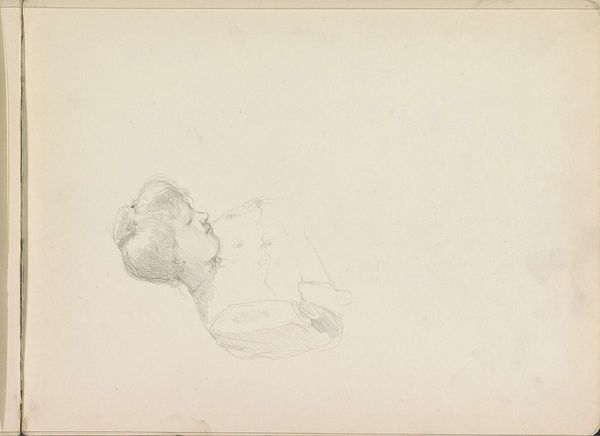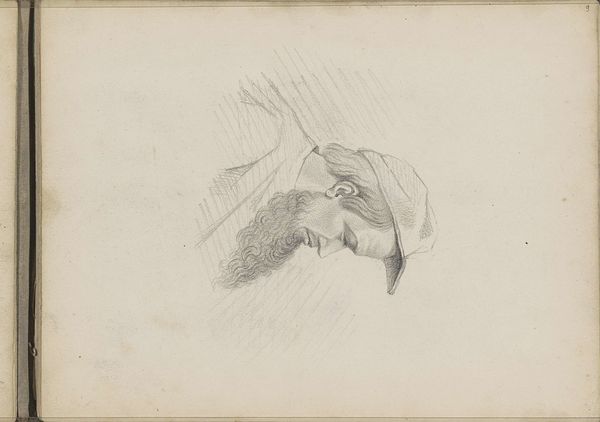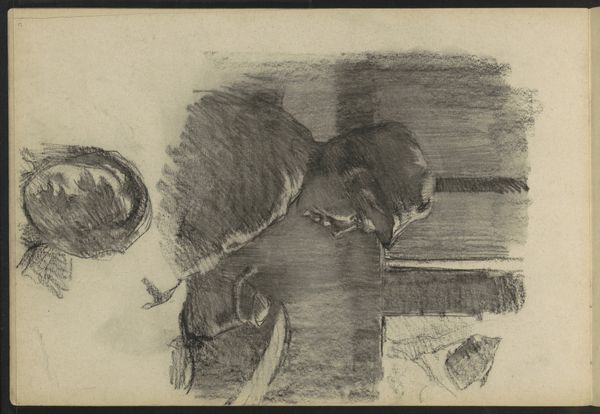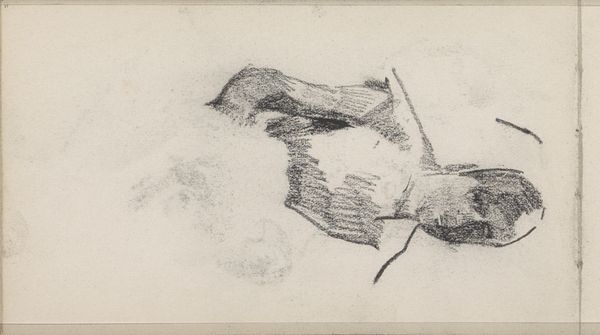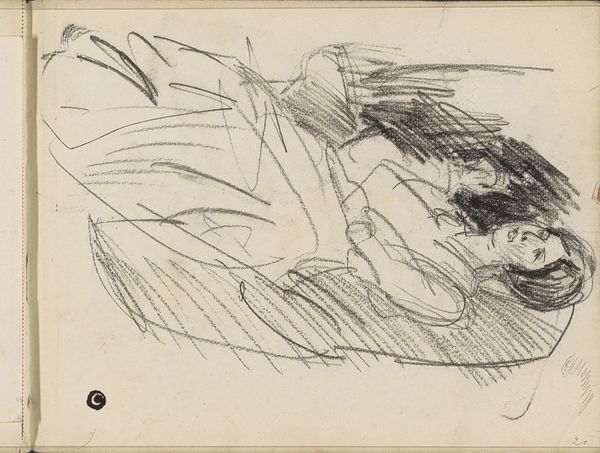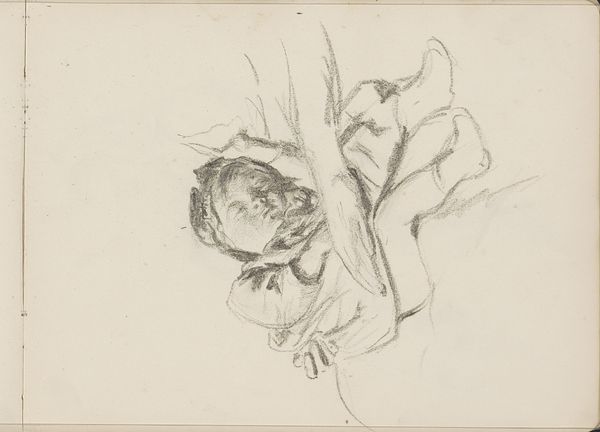
Dimensions: height 134 mm, width 209 mm
Copyright: Rijks Museum: Open Domain
Editor: Here we have "Bloemstudie", a flower study made with watercolor by Carel Adolph Lion Cachet sometime between 1874 and 1945. It's a delicate and kind of moody work. The monochromatic tones really give it a sense of faded beauty. How do you see this piece in terms of its historical and cultural context? Art Historian: Well, considering the date range, the absence of vibrant color in favor of somber shades speaks volumes. Monochrome works weren't always a stylistic choice; often, they reflect economic limitations or perhaps a cultural moment emphasizing sobriety after periods of upheaval. With no vibrant colour, there is an apparent lack of beauty often expected of such works, therefore, could the artist be pointing out these limitations? What purpose do you believe botanical illustration typically served during this era, and how does Cachet’s interpretation conform to or defy those norms? Editor: I imagine that it may have often been seen as purely scientific... or even as feminine hobby art. So Cachet showing off its somber nature may then be challenging the aesthetic tastes expected by institutions? Art Historian: Exactly. Watercolors were accessible, deemed a feminine pastime. A male artist focusing on it challenges those social boundaries. Also, the title labels it a ‘study.’ It implies preliminary work, a lower status in the artistic hierarchy of that period compared to, say, oil paintings of grand historical scenes. Editor: So, Cachet might be subtly critiquing artistic conventions through choice of subject and medium? By showing its process and subject? Art Historian: Precisely! Its accessibility makes it deceptively profound. What looks like a simple flower study becomes an inquiry into class, gender, and the very definition of "high art". Do you notice how the flower, instead of standing alone, blends with an evocative shade, perhaps indicative of it's slow passing? Editor: I hadn't really picked up on those cues. It gives an idea about his potential process. This makes me see the artist himself playing an institutional game! Art Historian: Precisely. Artists frequently engage and converse with cultural standards and practices through what could initially appear innocuous artistic choices.
Comments
No comments
Be the first to comment and join the conversation on the ultimate creative platform.

